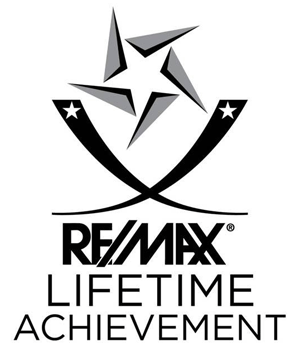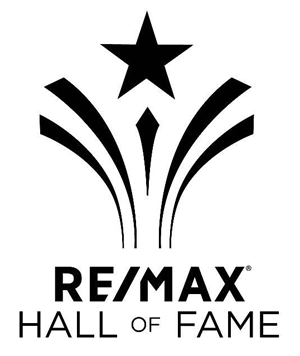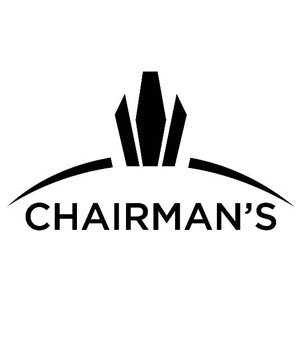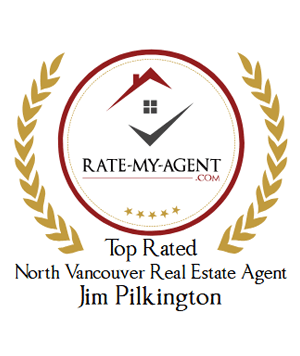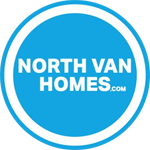Yes, walkability and transit access significantly boost property values in North Vancouver. Homes near major transit hubs, like the SeaBus terminal, command premium prices. Similarly, walkable neighbourhoods consistently outperform car-dependent areas in the real estate market. This trend reflects a growing buyer preference for convenience, lifestyle benefits, and reduced transportation costs.
North Vancouver’s unique geography, with its mountains and waterfront, creates distinct pockets of walkability and transit connectivity. These factors directly influence home values across the region. Understanding these patterns is crucial for buyers and sellers looking to make informed decisions in one of British Columbia’s most competitive real estate markets.
This article will explore the connection between walkability, transit, and property prices. We will analyze specific neighbourhoods, examine the economic factors driving these premiums, and provide strategies for buyers.
The Clear Link Between Walkability and Property Values
In North Vancouver, walkable neighbourhoods consistently command higher property values. Buyers are willing to pay more for the convenience of having amenities within walking distance, leading to a healthier lifestyle and lower transportation expenses.
Walk Score Impact on Pricing
Properties in North Vancouver with high Walk Scores—typically 70 and above—often sell for 10-15% more than similar homes in car-dependent locations. This premium has been growing over the last decade as more people prioritize a walkable lifestyle.
Central Lonsdale is a prime example of this trend. With a Walk Score of 85, it boasts some of the highest per-square-foot prices in North Vancouver. Residents can easily walk to Lonsdale Quay, various restaurants, shops, and essential services without needing a car.
The Convenience Premium
Living in a walkable area significantly reduces household transportation costs. The average Canadian household spends around $12,000 annually on vehicle-related expenses. In walkable North Vancouver neighbourhoods, many families can comfortably live with one car instead of two. This substantial saving helps justify the higher initial cost of homes in these areas.
Transit Access: The SeaBus Advantage
The SeaBus connection to downtown Vancouver is a major driver of real estate values in North Vancouver. Properties within a short walk of the Lonsdale Quay terminal consistently outperform the broader market, showcasing the high demand for efficient and reliable transit.
SeaBus Proximity Premium
Homes located within a 10-minute walk of the Lonsdale Quay SeaBus terminal command a 15-20% premium over comparable properties situated further away. This significant price difference reflects the value of the 12-minute ferry ride to downtown Vancouver, which makes a car-free commute a practical reality for many professionals.
The Harbourside development is a perfect illustration of this premium. These waterfront condos, located near the SeaBus, achieve some of the highest prices per square foot in North Vancouver, driven largely by their exceptional transit accessibility.
Bus Route Benefits
Beyond the SeaBus, North Vancouver’s extensive bus network also adds measurable value to properties. Routes that connect to SkyTrain stations in Burnaby and Vancouver create additional, albeit smaller, transit premiums. Homes served by frequent bus service (every 15 minutes or less) typically see a 5-8% boost in value compared to areas with limited transit options.
Neighbourhood Analysis: Where Walkability Pays Off Most
Different North Vancouver neighbourhoods show varying degrees of walkability and transit impact on property values. Understanding these local dynamics is key for buyers and sellers aiming to maximize their real estate investments.
Central Lonsdale: The Walkability Champion
Central Lonsdale stands out as North Vancouver’s most walkable neighbourhood, and its property values reflect this. The area’s high density of services, restaurants, and transit options creates a positive feedback loop, reinforcing both walkability and value. Recent sales data indicates that properties in Central Lonsdale sell for 12-18% above the North Vancouver average, when adjusted for size and condition. This premium has remained remarkably stable, even during market fluctuations.
Lower Lonsdale: Transit-Driven Values
Lower Lonsdale’s property values are heavily influenced by its proximity to the SeaBus. While it may be slightly less walkable for daily errands compared to Central Lonsdale, its direct transit link to downtown creates a powerful pricing dynamic. Properties within three blocks of the terminal command the highest premiums, with values gradually decreasing as the distance from the SeaBus increases. This clear gradient effect demonstrates the direct relationship between transit access and market value.
Lynn Valley: Suburban Walkability Premium
Lynn Valley offers a unique model of walkability, with a concentrated village centre surrounded by more traditional suburban residential areas. Properties within the walkable village core command a premium over homes further out, though the difference is less pronounced than in more urbanized areas like Lonsdale. The redevelopment of Lynn Valley Village has strengthened this premium, with new mixed-use developments fetching higher prices than older, single-family homes in the vicinity.
Edgemont Village: Boutique Walkability
Edgemont Village features a compact, walkable core that creates a distinct premium in its real estate market. The neighbourhood’s charming village atmosphere and accessible amenities justify higher prices for nearby properties. Homes within walking distance of Edgemont’s shops and services typically sell for 8-12% more than similar properties in less walkable parts of the neighbourhood.

As an award winning realtor who has lived my entire life on the North Shore, let me showcase your home and all the beauty this area has to offer. Get in touch now.
The Economics Behind the Premium
Several key economic factors explain why walkability and transit access command such a significant premium in North Vancouver’s real estate market.
Reduced Transportation Costs
Living in a walkable, transit-connected neighbourhood substantially reduces household transportation expenses. These savings, which can amount to $6,000-$8,000 annually, translate directly into housing affordability. Buyers can often qualify for larger mortgages because their monthly transportation costs are lower, allowing them to invest more in their homes.
Time Value Benefits
Reliable transit access also offers significant time savings. The consistent 12-minute SeaBus journey to downtown Vancouver stands in stark contrast to car commutes, which can fluctuate wildly from 20 minutes to over an hour depending on bridge traffic. This predictability has a measurable economic value that buyers are willing to pay for.
Future-Proofing Your Investment
As climate policies and carbon pricing make car-dependent lifestyles more expensive, properties in walkable, transit-connected areas are becoming increasingly desirable. These homes offer better protection against future increases in transportation costs, making them a more secure long-term investment.
Infrastructure Projects and Their Impact on Value
Ongoing and planned infrastructure projects continue to enhance walkability and transit premiums across North Vancouver.
Pedestrian and Cycling Infrastructure
Recent investments in pedestrian and cycling infrastructure, such as the Spirit Trail, have measurably improved walkability scores in several neighbourhoods. These improvements have been linked to property value increases of 3-7% in the affected areas by providing safe and convenient alternatives to driving.
Lonsdale Energy Corporation District Energy
The district energy system in Lower Lonsdale has improved the area’s sustainability profile, which in turn contributes to property value premiums. This type of infrastructure investment supports the development of higher-density, walkable communities that are attractive to modern buyers.
Challenges and Limitations
Despite the clear benefits, North Vancouver faces some challenges in expanding walkability and transit access.
Topographical Constraints
The region’s steep terrain can limit practical walkability in many areas. While the mountain views are a major draw, steep slopes can pose a challenge for residents with mobility issues or families with young children.
Limited Transit Coverage
Outside the main SeaBus corridor, transit options can be limited compared to Vancouver proper. This lack of comprehensive coverage can affect property values in otherwise desirable neighbourhoods that lack convenient transit access.
Legacy of Car-Centric Design
Many North Vancouver neighbourhoods were originally designed around car ownership, with spread-out amenities and limited sidewalk infrastructure. Retrofitting these areas to be more walkable requires significant investment and often faces development constraints.
Buyer Strategies for Maximizing Walkability Value
Smart buyers can maximize their investment by understanding walkability and transit premiums in North Vancouver real estate.
Research Walk Scores and Transit Routes
Before viewing properties, research Walk Scores and transit routes for target neighbourhoods. Properties with Walk Scores above 70 and good transit connections typically offer the best long-term value appreciation.
Use online tools to map walking distances to key amenities like grocery stores, schools, and medical services. Properties within a 5-minute walk of daily necessities command the strongest walkability premiums.
Consider Future Infrastructure
Research planned infrastructure improvements that could enhance walkability or transit access. Properties positioned to benefit from future improvements often offer better value appreciation potential.
The North Shore transportation strategy outlines long-term transit and active transportation improvements that will impact property values over time.
Balance Premium Against Budget
Walkability and transit premiums are measurable but may not suit every budget. Consider the long-term savings in transportation costs when evaluating whether to pay premiums for walkable, transit-connected properties.
Ready to Find Your Perfect Walkable Home?
Understanding the premiums associated with walkability and transit helps you make smarter real estate decisions in North Vancouver. Whether you’re buying or selling, these factors play a crucial role in both your lifestyle and your investment returns.
Having lived in North Vancouver my entire life, I’ve seen these trends develop firsthand. I know the nuances of each neighbourhood and can help you identify areas where walkability and transit access align with your personal and financial goals. The current market presents opportunities for savvy buyers who understand these dynamics. Properties in transitioning neighbourhoods can offer great value, allowing you to get in before the full premiums are realized.
If you’re ready to explore walkable, transit-connected properties in North Vancouver, I can help you navigate the market. Let’s book an appointment to discuss your priorities and find a home that maximizes both your lifestyle and your investment potential.
Frequently Asked Questions
How much more do walkable properties cost in North Vancouver?
Walkable properties typically cost 10-15% more than homes in car-dependent areas. This premium can rise to 15-20% for properties located near the SeaBus terminal due to the high demand for easy access to downtown Vancouver.
Which North Vancouver neighbourhoods offer the best walkability?
Central Lonsdale has the highest Walk Score (85), making it the most walkable neighbourhood. Other highly walkable areas include Lower Lonsdale, Lynn Valley Village, and Edgemont Village, each offering unique lifestyle benefits.
Does transit access affect resale value?
Absolutely. Properties with good transit access consistently outperform the broader market, holding their value better during downturns and appreciating more in strong markets. Transit connectivity provides price stability and a competitive edge.
Are walkability premiums worth the extra cost?
For many, yes. Households in walkable neighbourhoods can save $6,000-$8,000 annually on transportation. Over time, these savings can offset the initial property premium, not to mention the added lifestyle benefits.
How do I research walkability before buying?
Use online tools like Walk Score to check a property’s rating. More importantly, visit the neighbourhood at different times of the day to experience it firsthand. Map out walking distances to key amenities like grocery stores, schools, and parks.
Will climate policies increase walkability premiums?
It is very likely. As policies like carbon pricing make driving more expensive, the demand for walkable, transit-connected properties is expected to grow, further increasing their value.

